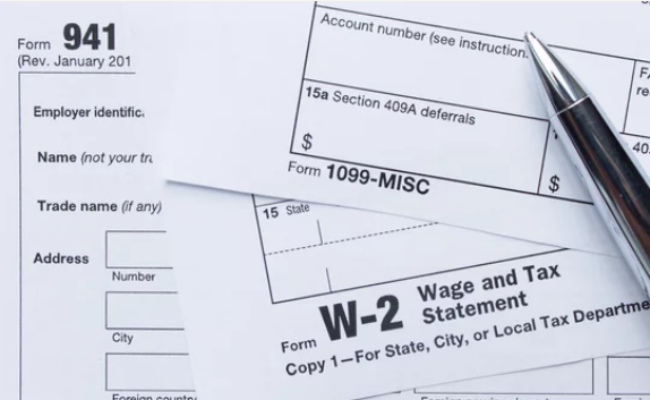Navigating Tax Relief: Understanding Its Importance, Eligibility, and Implications
The complex world of taxes can often feel overwhelming, filled with endless forms, calculations, and legal jargon. However, understanding tax relief can be a game-changer in reducing your financial burden and maximizing your benefits. Whether you’re an individual taxpayer, business owner, or nonprofit organization, knowing how to leverage tax breaks or relief can save you more money and provide valuable financial breathing room.
This article examines the intricacies of tax payments and unravels their importance in the larger tax landscape. We’ll also explore the various avenues through which individuals and businesses can take advantage of these benefits.
The Basics of Tax Relief

Understanding the basics is essential for taxpayers to take advantage of available opportunities and optimize their tax liabilities. Let’s take a quick overview of what a tax break or relief is.
What Is Tax Relief?
This concept refers to measures and provisions implemented by tax authorities such as the Internal Revenue Service (IRS) to alleviate the tax burden on individuals and businesses. It aims to provide financial assistance and promote economic activities. It also encourages behavior that benefits society and supports vulnerable populations.
Relief allows individuals and businesses to reduce their overall tax obligations and keep more income or profits. Taxpayers can save their hard-earned money and improve their finances by utilizing tax assistance measures.
Individuals can benefit from tax breaks through deductions, exemptions, and credits. Relief measures often target specific expenses like education, healthcare, homeownership, and retirement savings.
These provisions help individuals reduce their federal income tax, lower their liability, and keep more earnings. Your employer or pension provider will typically use your tax code to know the total amount to deduct from your wages.
Businesses can use tax debt measures to minimize their tax obligations and stimulate growth. Tax incentives are often provided to promote investment, job creation, and specific industries. These incentives can include tax credits, deductions, accelerated depreciation, and exemptions.
Relief works by incorporating specific provisions and regulations into tax laws. These provisions may allow taxpayers to deduct eligible expenses, claim tax credits for specific activities or situations, or benefit from a reduced tax rate.
The Internal Revenue Service (IRS) outlines the criteria and requirements for each measure, which taxpayers must meet to qualify for the benefits. Understanding the eligibility criteria, documentation requirements, and any limitations associated with each form of tax debt is crucial to ensure compliance and maximize savings.
You may also like: IRS Penalty Relief: Your Comprehensive Guide to Reduce Financial Burden
Different Types of Tax Relief

Photo credit: Adobe Stock
1. Tax Deductions
Tax deductions reduce taxable income, resulting in a lower tax liability. Deductions are typically available for specific expenses, such as mortgage interest, local and state taxes, medical expenses, education expenses, and charitable contributions.
2. Tax Credits
Tax credits directly reduce the tax owed, providing a dollar-for-dollar reduction in tax liability. Credits can be categorized into two types: refundable and non-refundable.
The refundable tax credit can exceed the total tax liability and result in a refund to the taxpayer. On the other hand, the non-refundable tax credit can reduce the tax liability to zero but do not provide a refund if they exceed the tax owed.
3. Tax Exemptions
Tax exemptions exclude certain types of income or entities from taxation. For individuals, common exemptions include personal and dependent exemptions. Exemptions reduce taxable income, leading to a lower tax liability.
4. Tax Deferrals
Tax deferrals allow taxpayers to postpone the advance payments on certain income or gains to a future date. This can provide temporary relief by allowing taxpayers to retain the income for investment or other purposes.
5. Tax Incentives and Special Provisions
Tax incentives and special provisions are relief measures for specific activities, industries, or regions. These measures often provide preferential tax treatment, such as reduced tax rates, accelerated depreciation, or investment tax credit. Some notable examples include research and development credits, energy-related incentives, and enterprise zone credits.
You may also like: IRS Offer in Compromise: A Comprehensive Guide to Settle Your Tax Debts
Eligibility for Tax Relief

Photo credit: Adobe Stock
Eligibility for relief varies depending on the specific type of relief and the jurisdiction in which you are subject to taxation. The Internal Revenue Service (IRS) establishes the criteria to determine who can qualify for various tax relief measures.
General Eligibility Requirements
Determining eligibility for tax breaks or relief depends on the specific measure and the jurisdiction’s tax laws. While eligibility criteria may vary, there are general factors to consider when assessing eligibility for tax relief.
Income Level
Many tax relief measures are often dependent on an individual’s income. Some measures may have income thresholds, phase-outs, or limitations.
Filing Status
Your filing status (single, married, jointly, or head of household) can affect eligibility for certain relief measures. Different requirements and benefits may apply based on your filing status.
Expenses and Activities
Some relief measures target specific expenses or activities. You might be eligible for relief based on education expenses, healthcare costs, energy-efficient home improvements, or contributions to retirement bank accounts.
Documentation and Record-Keeping
To claim tax breaks or deductions, you may need to provide supporting documentation or maintain accurate records. Navigating the eligibility process for relief can be complex. However, thorough research, professional guidance, and diligent record-keeping can greatly assist in determining eligibility and maximizing your tax benefits.
To determine your eligibility for relief, follow these steps:
- Research Tax Laws: Familiarize yourself with the tax laws and regulations governing the specific relief measure you are interested in. Review eligibility criteria, income thresholds, and any documentation requirements.
- Consult a Tax Professional: Seek advice from tax experts who can assess your circumstances and help determine your eligibility. They can provide personalized guidance and ensure you are considering all relevant factors. These professionals can provide you with an analysis of your tax liability and offer solutions to help you navigate the tax system.
- Utilize Online Resources: The Internal Revenue Service (IRS) often provides online resources, such as official websites or publications. These resources explain eligibility requirements for various tax relief measures. They can help you understand the criteria and navigate the eligibility process.
- Keep Records Organized: Maintain accurate records of your income, expenses, and the necessary documentation to support your eligibility claims. Organized records help streamline the eligibility process and ensure compliance with documentation requirements.
Tax Relief for Unpaid Federal Taxes

Photo credit: Adobe Stock
Tax help for unpaid back taxes is available to individuals and small businesses facing difficulties meeting their tax obligations. These tax help measures aim to provide solutions for resolving unpaid taxes while offering some financial relief.
An installment agreement lets taxpayers pay their unpaid federal income taxes over time in smaller, manageable monthly installments. This option provides flexibility and prevents the immediate burden of paying the full amount owed.
Also, if taxpayers cannot pay their federal taxes due to financial hardship, they may qualify for Currently Not Collectible (CNC) status. This means the Internal Revenue Service (IRS) temporarily suspends collection activities until the taxpayer’s financial situation improves.
When applying for tax break options for unpaid federal taxes, it is essential to determine which relief option is most suitable for your circumstances. Evaluate your financial position, income, and ability to pay tax debts.
You may also like: Tax Credits for Small Businesses: A Comprehensive Guide to Maximizing Benefits
Implications of Tax Relief
Tax relief measures have various implications for individuals, businesses, and the economy. Understanding these implications is vital for taxpayers and policymakers.
Financial Implications of Tax Relief
Tax relief measures, such as deductions or credits, can reduce the amount of income taxes, resulting in a lower tax liability. This translates into increased income, allowing individuals to retain more earnings for personal spending, saving, or investment purposes.
Relief measures can provide a cash flow boost for businesses or non profit organizations by reducing the amount of taxes they owe. The business can then reinvest additional cash for expansion and research. They can also use this for development, equipment purchases, or hiring new employees.
Furthermore, tax relief measures targeted at low-income individuals, families, or vulnerable populations can provide significant financial relief. For example, refundable tax credits, like Earned Income Tax credits, can result in direct refunds to eligible individuals. This helps them meet basic needs, reduce tax debt, or save for the future.
Legal Implications of Tax Relief
Relief measures have legal implications that must be considered when applying for and utilizing tax breaks. Understanding the legal considerations associated with tax return to ensure compliance and avoid potential consequences is necessary.
Some tax return measures come with specific terms and conditions that taxpayers must adhere to. This can include requirements related to using funds, reporting obligations, or maintaining certain activities.
Understanding and complying with these terms is important to avoid any legal issues. Tax relief measures often have specific eligibility criteria outlined by the IRS. It is crucial to accurately assess your eligibility before applying for relief.
Providing false information or claiming relief for which you are not eligible can have legal consequences, including penalties, fines, or criminal charges.
Relief applications may attract scrutiny from the Internal Revenue Service (IRS). They may conduct audits or investigations to verify the accuracy and eligibility of claimed relief. Non-compliance or fraudulent activities discovered during these processes can lead to penalties, fines, or legal action.
In some cases, tax returns may be subject to clawback provisions. These provisions allow the IRS to recover previously granted relief if a taxpayer does not meet certain conditions or if they fail to fulfill their obligations.
If a taxpayer doesn’t abide by the terms of a tax relief agreement, potential outcomes may include the following:
1. Penalties and Fines
Non-compliance with the terms of a tax relief agreement can result in penalties and fines imposed by tax authorities. The severity of penalties depends on the nature and extent of the violation.
2. Loss of Tax Benefits
Failure to meet the requirements or adhere to the terms of a tax relief agreement can lead to the loss of the intended tax benefits. This may result in higher tax liabilities or the denial of claimed relief.
3. Legal Consequences
Serious non-compliance or intentional fraudulent activities related to tax relief can lead to legal consequences. This can include criminal charges, investigations, or civil litigation, resulting in substantial fines, asset seizures, or even imprisonment.
You may also like: Tax Relief Programs: Your Essential Guide to Financial Reprieve
Conclusion

Photo credit: Adobe Stock
Understanding tax relief is crucial for individuals and businesses looking to maximize their finances. This article explored the various aspects of tax returns, highlighting their importance and guiding navigating this complex landscape.
We also addressed the legal implications of tax relief, emphasizing the need to comply with eligibility requirements and terms and conditions associated with relief measures. Failing to abide by the rules can lead to loss of benefits and even legal consequences.
Seeking advice by consulting with tax professionals or attorneys is crucial so you have personalized guidance. They ensure compliance with tax laws and regulations while maximizing the financial benefits of tax returns.
Editor’s Note: This post was originally published on Jun 5, 2023, and was updated on Aug 1, 2023.


